Typeerror Expected String Or Bytes-Like Object
Have you ever encountered a TypeError in Python with the message “Expected string or bytes-like object”? This error message can be quite confusing for beginners, but understanding its causes and how to handle it is essential for writing efficient and bug-free code. In this article, we will explore the TypeError, its definition, common causes, and various techniques to handle and debug it. We will also provide best practices to avoid TypeErrors in your Python programming journey.
What is a TypeError?
In Python, a TypeError is raised when an operation or function is performed on an object of an inappropriate type. It indicates that the code is trying to use the object in a way that it was not designed for. This error occurs when the Python interpreter expects a string or bytes-like object but receives something else.
Common causes of TypeErrors
There are several common causes that can result in a TypeError. Some of them include:
1. Passing incorrect arguments to functions or methods: If the arguments passed to a function or method do not match the expected data types, a TypeError can occur.
2. Incorrectly formatted data types: If the data types used in the code are not compatible with the operation being performed, a TypeError can be raised. For example, trying to perform arithmetic operations on strings instead of numbers.
3. Mixing strings and non-string objects: When mixing strings and non-string objects, such as integers or floats, in an unsupported manner, a TypeError can occur.
Understanding strings and bytes-like objects
Before delving further into TypeErrors, it is important to understand the difference between strings and bytes-like objects. In Python, a string is a sequence of Unicode characters, while a bytes-like object represents a sequence of bytes.
Strings are declared using single or double quotes, such as “hello” or ‘world’. They are used to represent text or characters in Python. On the other hand, bytes-like objects are declared using a ‘b’ prefix before the quotes, such as b”hello” or b’world’. They are used to represent binary data or byte sequences, such as images or encoded files.
Common scenarios that result in TypeErrors
Let’s explore some common scenarios where TypeErrors can occur:
1. Passing incorrect arguments to functions or methods:
“`python
age = “25”
print(“My age is ” + age)
“`
In this case, the concatenation operation expects a string, but `age` is defined as a string object. To fix this, you can either convert `age` to a string explicitly using `str(age)` or use string formatting techniques like f-strings.
2. Incorrectly formatted data types:
“`python
x = “5”
y = 10
sum = x + y # TypeError: can only concatenate str (not “int”) to str
“`
Here, the addition operation is performed between a string and an integer. To resolve this, you need to convert `x` to an integer using the `int()` function before performing the addition.
3. Mixing strings and non-string objects:
“`python
username = “hello”
age = 25
print(username + age) # TypeError: can only concatenate str (not “int”) to str
“`
In this example, the concatenation operation is performed between a string and an integer. To fix this, you can convert the integer to a string explicitly using `str(age)`.
Handling TypeErrors in Python
Now that we understand the causes of TypeErrors, let’s explore some techniques to handle them effectively.
1. Using try-except blocks to catch TypeErrors:
“`python
try:
result = some_function(argument)
except TypeError as e:
print(“An error occurred:”, e)
“`
By wrapping the code that may raise a TypeError inside a try-except block, you can catch the exception and handle it gracefully. This helps in preventing the program from crashing and allows you to display a custom error message to the user.
2. Converting objects to the correct data type:
“`python
age = “25”
username = “John”
sum = int(age) + int(username)
print(sum)
“`
In this example, the `age` and `username` variables are converted to integers using the `int()` function before performing the addition. This ensures that the operation is performed on the correct data types and avoids TypeErrors.
3. Checking the data type before operations:
“`python
value = get_value()
if isinstance(value, str):
# Perform string operations
elif isinstance(value, bytes):
# Perform bytes operations
else:
# Handle other data types
“`
By using the `isinstance()` function, you can check the data type of an object before performing any operations. This helps in preventing TypeErrors by ensuring that the appropriate operation is performed on the correct data type.
Debugging TypeErrors
During development, encountering a TypeError can be frustrating. However, with a systematic debugging approach, you can quickly identify and resolve the issues causing the TypeError.
1. Reviewing error messages and stack traces:
When a TypeError occurs, the Python interpreter provides an error message along with a stack trace. This information can help you identify the line of code where the TypeError occurred and provide insights into the cause.
2. Inspecting the problematic line of code:
After identifying the line of code causing the TypeError, examine the objects involved in the operation. Check whether they are of the expected type and whether any conversions or type checks are required.
3. Using print statements for debugging:
Inserting print statements before and after the problematic line of code can provide additional information about the objects and their types. This can help you understand how the objects are being manipulated and identify any inconsistencies.
Best practices to avoid TypeErrors
Here are some best practices to help you avoid TypeErrors in your Python code:
1. Type hinting and explicit type conversions:
By using type hints in function and method signatures, you can specify the expected data types of the arguments and return values. Additionally, when performing operations on objects, always explicitly convert them to the correct data type to avoid unexpected errors.
2. Regularly testing and debugging the code:
Testing your code regularly helps in identifying and addressing TypeErrors before they manifest in production. Writing unit tests that cover different scenarios can help catch edge cases and validation issues.
3. Using assert statements for type checking:
Inserting assert statements in your code to validate the types of variables and objects can help prevent TypeErrors. For example:
“`python
value = get_value()
assert isinstance(value, str), “Value must be a string”
“`
This ensures that the value is of the expected type and raises an AssertionError if not.
In conclusion, TypeErrors are a common occurrence in Python programming, but with proper understanding and handling techniques, they can be resolved efficiently. By following best practices and adopting a systematic approach to debugging, you can minimize the occurrence of TypeErrors in your code. Remember to always be mindful of type compatibility when working with strings, bytes-like objects, and other data types, and use appropriate techniques to convert and validate types as needed. Happy coding!
FAQs:
Q: What is the meaning of “Expected string or bytes-like object”?
A: “Expected string or bytes-like object” is an error message that indicates that the code was expecting a string or bytes-like object but received something else instead.
Q: How can I fix the “Expected string or bytes-like object” error in regex findall?
A: To fix this error, ensure that you are passing a string or bytes-like object as the input to the `findall()` function.
Q: I encountered a “TypeError: A bytes-like object is required, not ‘str'” when working with Django. How can I resolve it?
A: This error typically occurs when a function or operation in Django expects a bytes-like object but receives a string. To resolve it, you can encode the string using the appropriate encoding before passing it to the function or operation.
Q: Why do I get a “TypeError: cannot use a string pattern on a bytes-like object”?
A: This error occurs when you try to use a string pattern on a bytes-like object. To fix this, you can either convert the bytes-like object to a string or use a bytes-like pattern matching technique.
Q: How to resolve the “TypeError: decoding to str: need a bytes-like object, NoneType found” error?
A: This error typically occurs when you try to decode a NoneType object instead of a bytes-like object. Make sure that the object you are trying to decode is not None and is of a compatible type before using the `decode()` function.
Q: How can I extract a matching substring from a string using regex in Python without encountering a “TypeError: expected string or bytes-like object”?
A: To avoid this error, ensure that the input string you are using with the `re` module is a string or bytes-like object. If necessary, convert the object to the appropriate type before using regex operations.
Q: What should I do if I encounter a “TypeError: expected string or bytes-like object” when using the `re.sub()` function in Python?
A: This error occurs when the input string or replacement parameter in `re.sub()` is not a string or bytes-like object. Make sure that both parameters are of compatible types before using this function.
Q: Why do I receive a “TypeError: Regex match object doesn’t support item deletion” when trying to extract a value using regex in Python?
A: This error occurs when you try to delete an item from a regex match object. Remember that match objects are read-only and cannot be modified directly. If you need to modify the matched value, you can use the `re.sub()` function instead.
Q: How can I avoid the “TypeError: expected string or bytes-like object” in Python when extracting values using regex?
A: To avoid this error, ensure that the input string you are using with regex operations is a string or bytes-like object. Additionally, use appropriate type conversions and checks to ensure compatibility with the regex function being used.
Expected String Or Bytes Like Object | Python Programming
What Is A Bytes-Like Object?
In programming, a bytes-like object refers to an entity that can be compared or used with bytes objects, but it may not necessarily be an actual bytes object. It can be any sequence of elements or characters that represent data in the form of bytes, allowing it to be processed or manipulated in a similar way.
In Python, bytes-like objects are often used when dealing with binary data, such as reading from or writing to files, network communication, or cryptographic operations. They provide a way to represent and handle data in a byte-oriented manner, which is essential for working with low-level details or binary-centric applications.
Understanding the characteristics of bytes-like objects can greatly enhance one’s programming abilities and enable more efficient and reliable data processing. Let’s dive deeper into the concept and explore the various aspects related to bytes-like objects.
Common Examples
Bytes-like objects can take on various forms, depending on the programming language or framework being used. Here are some common examples of bytes-like objects:
1. Bytes objects: By definition, bytes objects are immutable sequences of integers representing bytes. They can be constructed using several methods, such as b”string”, bytes(iterable), or even by calling the bytes constructor directly. Bytes objects are commonly used to represent binary data in Python.
2. Bytearray objects: Similar to bytes, a bytearray is a mutable sequence of integers representing bytes. It can be altered after creation, making it useful in situations where the data needs to be modified.
3. Memoryview objects: Memoryview is a built-in Python class that allows direct access to the internal data of an object, such as a bytes object or bytearray. It provides a way to manipulate and view the data without actually copying it, thus improving efficiency when working with large amounts of data.
4. Numpy arrays: In the context of scientific computing with Python, numpy arrays can also be considered as a form of bytes-like object. They provide a powerful and efficient way to store and manipulate large datasets, especially for mathematical and scientific operations.
Properties and Methods
Bytes-like objects share several properties and methods that allow seamless processing of binary data. Some common attributes include:
1. length or size: The number of elements or bytes in the object can be obtained using the len() function or by accessing the `.size` attribute.
2. indexing and slicing: Bytes-like objects can be accessed using indexing (e.g., obj[0]) or slicing (e.g., obj[2:5]) syntax. This enables retrieval of specific bytes or subsequences from the object.
3. immutability: In the case of bytes objects, they are immutable and cannot be changed once created. On the other hand, bytearray objects allow modification after creation.
4. iteration: Bytes-like objects can be iterated over using a loop, enabling easy traversal and processing of the individual elements.
5. type conversion: Bytes-like objects can be converted to other formats, such as strings, using the `decode()` method. Similarly, strings or other sequences can be converted to bytes-like objects using the `encode()` method.
Frequently Asked Questions
Q: Can a string be considered a bytes-like object?
A: No, a string is not considered a bytes-like object. Though they share similarities, strings store textual data (characters) while bytes-like objects store binary data (bytes). However, strings can be converted to bytes-like objects using encoding techniques, such as UTF-8.
Q: How can I convert a bytes-like object to a string?
A: You can convert a bytes-like object to a string using the `decode()` method. For example, if `data` is a bytes-like object, you can convert it to a string with `decoded_data = data.decode()`.
Q: What is the difference between bytes and bytearray?
A: The main difference is the mutability. Bytes objects are immutable, meaning they cannot be altered after creation. Bytearray objects, on the other hand, are mutable and can be modified after creation.
Q: Can I concatenate two bytes-like objects?
A: Yes, you can concatenate two bytes-like objects using the `+` operator. It will create a new bytes object containing the combined data. For example, `new_data = data1 + data2`.
Q: Are bytes-like objects typical for other programming languages?
A: The concept of bytes-like objects, or similar constructs, exists in many programming languages under different names. For instance, in C/C++, the `char*` type is often used to represent binary data, and in Java, the `byte[]` array is commonly employed for similar purposes.
Conclusion
Bytes-like objects provide a flexible and efficient way to handle binary data in programming. Understanding the concept of bytes-like objects, their properties, and methods can greatly assist in tasks involving file I/O operations, networking, cryptography, or any scenario requiring manipulation of binary data. By leveraging the power of bytes-like objects, you can develop more robust and scalable applications, especially when dealing with low-level details or binary-centric processes.
What Is Bytes Python?
Bytes in Python refer to a built-in data type that represents a sequence of integers ranging from 0 to 255. These integers, known as bytes, are used to store raw binary data. In Python, bytes are immutable objects, meaning their value cannot be changed once they are created.
Bytes and strings in Python differ primarily in the way they store and represent data. While strings are made up of Unicode characters, bytes consist of raw binary data, typically used for representing images, audio files, and other non-textual data.
Creating Bytes Objects
To create a bytes object in Python, the built-in bytes() function is used. It takes two optional arguments: source and encoding. The source argument specifies the data to be converted into bytes, while encoding specifies the character encoding to be used during the conversion. If the source argument is not provided, an empty bytes object is returned.
Let’s take a look at some examples:
“`python
# Creating a bytes object from a string
string = “Hello, world!”
bytes_obj = bytes(string, encoding=”utf-8″)
print(bytes_obj)
# Creating an empty bytes object
empty_bytes = bytes()
print(empty_bytes)
# Creating a bytes object from a list of integers
integers = [72, 101, 108, 108, 111]
bytes_obj = bytes(integers)
print(bytes_obj)
“`
Output:
“`
b’Hello, world!’
b”
b’Hello’
“`
Working with Bytes
Once a bytes object is created, various methods and operations can be performed on it. One common operation is slicing, which allows extracting specific portions of the bytes object. Slicing works similar to strings and lists in Python.
“`python
bytes_obj = b’Hello, world!’
print(bytes_obj[0]) # 72
print(bytes_obj[1:5]) # b’ello’
“`
Output:
“`
72
b’ello’
“`
Another common operation is converting a bytes object into a string or vice versa. The `decode()` method is used to convert bytes to a string, and the `encode()` method is used to convert a string to bytes.
“`python
bytes_obj = b’Hello, world!’
string = bytes_obj.decode(“utf-8”)
print(string)
string = “Hello, world!”
bytes_obj = string.encode(“utf-8”)
print(bytes_obj)
“`
Output:
“`
Hello, world!
b’Hello, world!’
“`
Bytes objects also support some common methods for manipulation, such as `len()` to get the number of bytes, `count()` to count the occurrences of a specific byte, and `index()` to find the index of the first occurrence of a byte.
“`python
bytes_obj = b’Hello, world!’
print(len(bytes_obj)) # 13
print(bytes_obj.count(b’l’)) # 3
print(bytes_obj.index(b’o’)) # 4
“`
Output:
“`
13
3
4
“`
FAQs about Bytes in Python:
Q: How are bytes different from strings in Python?
A: The main difference lies in the way they store and represent data. Strings are composed of Unicode characters, while bytes consist of raw binary data.
Q: When should I use bytes in Python?
A: Bytes should be used when dealing with non-textual data, such as images, audio files, or any other form of raw binary data. They are also useful when working with network protocols or low-level I/O operations.
Q: How do I convert a string to bytes in Python?
A: To convert a string to bytes, you can use the `encode()` method. It takes an optional argument that specifies the character encoding to be used during the conversion.
Q: How do I convert bytes to a string in Python?
A: To convert bytes to a string, you can use the `decode()` method. It also takes an optional argument specifying the character encoding.
Q: Can I modify a bytes object in Python?
A: No, bytes objects are immutable, meaning their value cannot be changed after creation. If you need a mutable data type for manipulating binary data, you can use a bytearray instead.
In conclusion, bytes in Python are a fundamental data type used for representing raw binary data. They provide a way to store and manipulate non-textual information such as images, audio files, and more. By understanding how to create and work with bytes objects, Python developers gain greater flexibility when dealing with binary data.
Keywords searched by users: typeerror expected string or bytes-like object Expected string or bytes like object re findall, Expected string or bytes like object django, A bytes-like object is required, not ‘str, Regex match string Python, Re sub trong Python, Cannot use a string pattern on a bytes-like object, Decoding to str need a bytes-like object nonetype found, Regex extract Python
Categories: Top 64 Typeerror Expected String Or Bytes-Like Object
See more here: nhanvietluanvan.com
Expected String Or Bytes Like Object Re Findall
The re.findall() function is a powerful tool in the Python programming language for finding all non-overlapping matches of a pattern in a given string or bytes-like object. This function is part of the re module, which provides support for regular expressions in Python.
When working with the re.findall() function, it is essential to ensure that the input data passed to the function is of the expected type. In most scenarios, the input data should be either a string or a bytes-like object. This article will explore the concept of expected string or bytes-like object in the context of re.findall() while providing a detailed explanation and answering some frequently asked questions.
Understanding the expected types: string and bytes-like object
To utilize re.findall() effectively, it is necessary to understand what is meant by a string and a bytes-like object.
1. String: In Python, a string is a sequence of characters enclosed within single quotes (‘ ‘) or double quotes (” “). For example, ‘hello world’ and “Python is great!” are both strings.
2. Bytes-like object: A bytes-like object is a sequence of bytes. It is used to represent binary data, such as an image or audio file. In Python, a bytes-like object can be created by using the bytes() constructor or by specifying a string literal with a ‘b’ prefix. For instance, b’hello’ and bytes(‘world’, ‘utf-8′) are both bytes-like objects.
Expected input types for re.findall()
The re.findall() function expects its input data to be either a string or a bytes-like object. It uses regular expressions to search for a pattern within the provided input. However, if the input data does not match the expected types, a TypeError is raised.
Passing a string to re.findall()
When providing a string to re.findall(), the function interprets the input as a sequence of characters and performs the search operation accordingly. Here’s an example demonstrating the usage:
“`python
import re
text = “The quick brown fox jumps over the lazy dog”
pattern = r’\w+’
matches = re.findall(pattern, text)
print(matches) # Output: [‘The’, ‘quick’, ‘brown’, ‘fox’, ‘jumps’, ‘over’, ‘the’, ‘lazy’, ‘dog’]
“`
Passing a bytes-like object to re.findall()
In some scenarios, you might need to search for a pattern within binary data, such as an encoded string or a file. In such cases, you can pass a bytes-like object to re.findall(). The function will then interpret the input data as a sequence of bytes and perform the necessary operations. Here’s an example:
“`python
import re
data = b’\x48\x45\x4C\x4C\x4F\x20\x57\x4F\x52\x4C\x44′
pattern = rb’\x57\x4F\x52\x4C\x44′
matches = re.findall(pattern, data)
print(matches) # Output: [b’WORLD’]
“`
Frequently Asked Questions (FAQs)
Q1. Can I use re.findall() with other input types, such as lists or tuples?
A1. No, re.findall() expects its input to be either a string or a bytes-like object. If you want to search for a pattern within a list or a tuple, you can join the elements into a string using the str.join() method and then apply re.findall().
Q2. What is the difference between re.findall() and re.finditer()?
A2. The re.findall() function retrieves all non-overlapping matches of a pattern in a given input. On the other hand, re.finditer() returns an iterator that provides match objects for each non-overlapping match found. This can be more memory-efficient when working with large data sets.
Q3. Can I use re.findall() with a compiled regular expression pattern?
A3. Yes, re.findall() can accept a compiled regular expression pattern as the first argument. This allows you to reuse a pattern multiple times, possibly speeding up the search process.
Q4. Is re.findall() case-sensitive when searching for a pattern?
A4. By default, re.findall() is case-sensitive. However, you can make it case-insensitive by using the re.IGNORECASE flag as an argument to re.findall() or by including the flag in the regular expression pattern.
Conclusion
The re.findall() function in Python is a versatile tool for extracting matches of a pattern from string or bytes-like objects. However, it is crucial to provide the expected data types, i.e., a string or a bytes-like object, for proper functioning. By understanding this concept and some frequently asked questions, you can effectively utilize re.findall() in your regular expression-based tasks.
Expected String Or Bytes Like Object Django
Django is a popular web framework that simplifies the development of robust and scalable web applications. It provides numerous built-in features and utilities to handle various operations, such as data manipulation, form handling, and template rendering. One common scenario that developers encounter while working with Django is the “Expected string or bytes-like object” error. In this article, we will delve into the details of this error, understand its causes, and explore potential solutions.
Understanding the Error:
The “Expected string or bytes-like object” error is typically encountered when Django expects a specific type of data to be passed, but receives something different. In most cases, this error arises while working with file uploads, form handling, or manipulating data before rendering it in templates. Django expects certain operations, such as reading or writing files, to be performed on string or bytes-like objects, but if an incompatible type is used, this error is raised.
Common Causes and Solutions:
1. Using an Invalid File Path:
One of the most common causes of the “Expected string or bytes-like object” error is passing an invalid file path while trying to open or read a file. Ensure that the file path is correct and exists in the specified location. Double-check the path and try using an absolute path instead of a relative one.
2. Invalid Data Type:
Another possible cause of this error is passing an invalid data type instead of a string or bytes-like object. For example, when working with file uploads, make sure you pass the file object itself, not the file path. Validate that you are using the appropriate data type for the operation you are trying to perform.
3. Encoding Issues:
Many times, this error is triggered due to encoding problems while handling data. Ensure that the data you are working with is properly encoded and compatible with the expected data type. Use the appropriate encoding methods, such as `.encode()` or `.decode()`, to convert strings or bytes-like objects accordingly.
4. Form Handling:
When working with Django forms, ensure that the form fields are declared correctly and contain the expected data types. For instance, if you define a form field to accept a file upload, make sure you declare it as a `FileField` or an appropriate form field type to handle file uploads.
5. Template Rendering:
In some cases, this error may arise when rendering templates that expect a specific data type. Double-check the variables passed to the template and verify that they match the expected data type. If a variable contains incompatible data, convert it to the expected type before passing it to the template.
FAQs:
Q1. What should I do if I encounter the “Expected string or bytes-like object” error?
A: First, thoroughly analyze the context in which the error is arising. Check for possible causes such as invalid file paths, incorrect data types, encoding issues, or incorrect form field declarations. Based on the analysis, apply the appropriate solution mentioned above.
Q2. Can this error occur when working with database operations?
A: Though this error is more commonly associated with file handling and template rendering, it can potentially occur during database operations as well. Ensure that the data being passed to the database operation matches the expected data type.
Q3. How can I debug this error more effectively?
A: Utilize Django’s logging capabilities to capture and analyze relevant error messages. Additionally, use proper exception handling techniques to obtain detailed error traceback information. This can assist in pinpointing the root cause of the error.
Q4. Is there a way to prevent this error from occurring in the first place?
A: Following best practices, such as validating file paths, ensuring the correct data types, and encoding data properly can significantly reduce the likelihood of encountering this error. Additionally, leveraging Django’s form handling and template rendering features correctly can help prevent this error from occurring.
In conclusion, the “Expected string or bytes-like object” error is a common obstacle encountered while developing Django applications. By understanding the causes discussed above and following their respective solutions, developers can effectively troubleshoot and resolve this error. Awareness of the potential pitfalls and thorough testing can help ensure a smooth development experience while working with Django.
Images related to the topic typeerror expected string or bytes-like object

Found 40 images related to typeerror expected string or bytes-like object theme















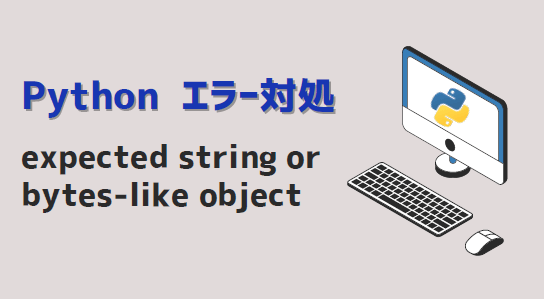










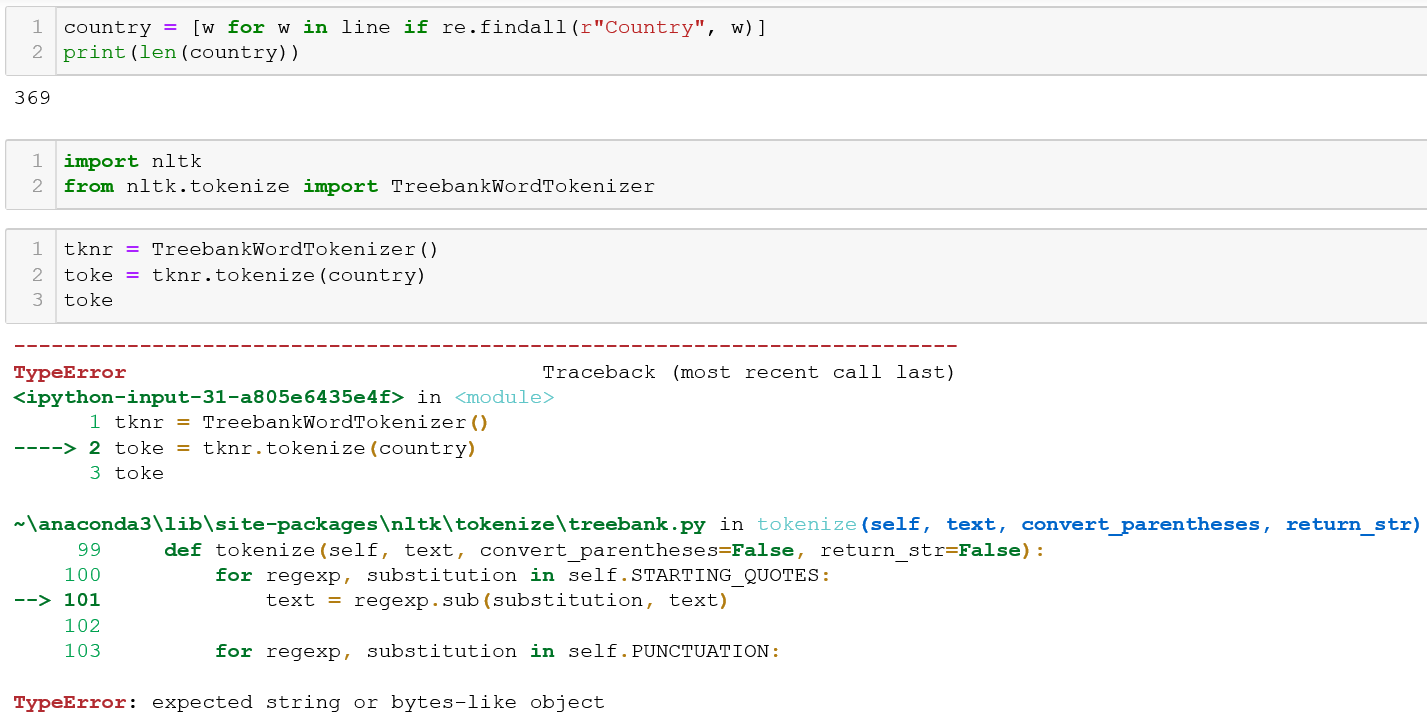





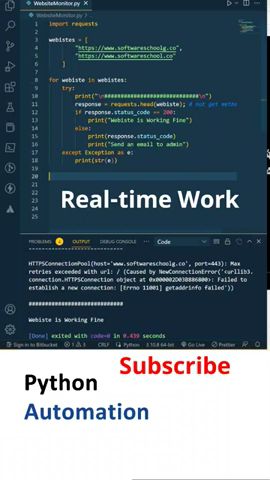

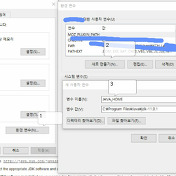


![Python Error] TypeError: expected string or bytes-like object Python Error] Typeerror: Expected String Or Bytes-Like Object](https://img1.daumcdn.net/thumb/C176x176/?fname=https://blog.kakaocdn.net/dn/GANO7/btq0fkMS2nK/oNdOqvOPpkfeJvkPEopV0K/img.png)





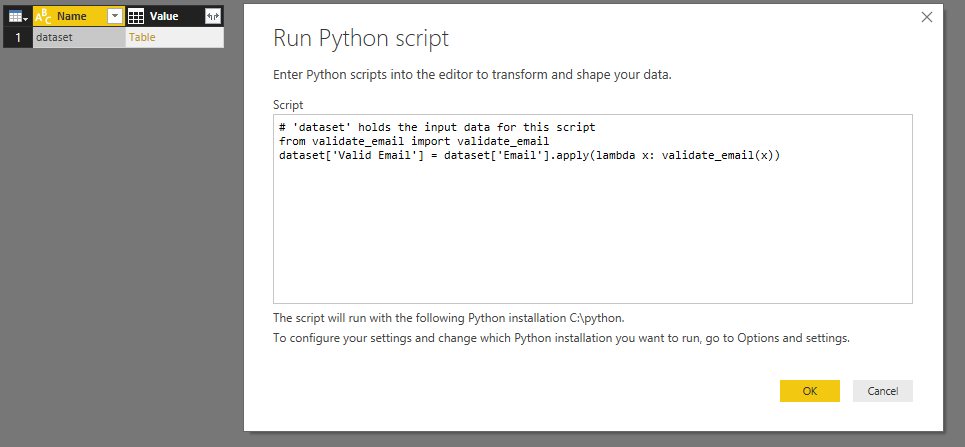



Article link: typeerror expected string or bytes-like object.
Learn more about the topic typeerror expected string or bytes-like object.
- TypeError: expected string or bytes-like object in Python
- How to Fix: Typeerror: expected string or bytes-like object
- Solve Python TypeError: expected string or bytes-like object
- re.sub erroring with “Expected string or bytes-like object”
- TypeError expected string or bytes-like object – STechies
- Resolving TypeError: A Bytes-like Object is Required, Not ‘str’ in Python
- Why is Python bytes() function used? – Toppr
- TypeError: expected string or bytes-like object in Python
- How to Fix TypeError: expected string or bytes-like object
- Typeerror: expected string or bytes-like object [SOLVED]
See more: nhanvietluanvan.com/luat-hoc